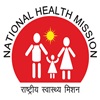National Viral Hepatitis Control Program (NVHCP)
Viral hepatitis is increasingly being recognized as a public health problem in India. Hepatitis B and C, the two main types of the five different hepatitis infections (A, B, C, D, E), are responsible for 96% of overall viral hepatitis related mortality. Anti-Hepatitis C virus (HCV) antibody prevalence in the general population is estimated to be between 0.09-15%. Chronic HCV infection accounts for 12-32% of HCC and 12-20% of cirrhosis. The sequel of chronic hepatitis which includes cirrhosis and HCC poses long term burden on the health system. A recent cost benefit analysis of treating hepatitis C infection demonstrated that curing the HCV with 12-24 weeks of directly acting antivirals (DAAs) is substantially more cost effective than managing the sequels and has better health outcomes. The advent of newer and safe drugs for treatment of Hepatitis C ensuring cure makes it easier to combat it.
Aims:
1. Combat hepatitis and achieve country wide elimination of Hepatitis C by 2030.
2. Achieve significant reduction in the infected population, morbidity and mortality associated with Hepatitis B and C viz. Cirrhosis and Hepato-cellular carcinoma (liver cancer).
3. Reduce the risk, morbidity and mortality due to Hepatitis A and E.
Key Objectives:
1. Enhance community awareness on hepatitis and lay stress on preventive measures among general population especially high-risk groups and in hotspots.
2. Provide early diagnosis and management of viral hepatitis at all levels of healthcare.
3. Develop standard diagnostic and treatment protocols for management of viral hepatitis and its complications.
4. Strengthen the existing infrastructure facilities, build capacities of existing human resource and raise additional human resources, where required, for providing comprehensive services for management of viral hepatitis and its complications in all districts of the country.
5. Develop linkages with the existing National programmes towards awareness, prevention, diagnosis and treatment for viral hepatitis.
6. Develop a web-based “Viral Hepatitis Information and Management System” to maintain a registry of persons affected with viral hepatitis and its sequel.
The key components include:
1. Preventive component:
This remains the cornerstone of the NVHCP. It includes
a) Awareness generation
b) Immunization of Hepatitis B (birth dose, high risk groups, health care workers)
c) Safety of blood and blood products
d) Injection safety, safe socio-cultural practices
e) Safe drinking water, hygiene and sanitary toilets
2. Diagnosis and Treatment:
a) Screening of pregnant women for HBsAg to be done in areas where institutional deliveries are < 80% to ensure their referral for institutional delivery for birth dose Hepatitis B vaccination.
b) Free screening, diagnosis and treatment for both hepatitis B and C would be made available at all levels of health care in a phased manner.
c) Provision of linkages, including with private sector and not for profit institutions, for diagnosis and treatment.
d) Engagement with community/peer support to enhance and ensure adherence to treatment and demand generation.
3. Monitoring and Evaluation, Surveillance and Research
Effective linkages to the surveillance system would be established and operational research would be undertaken through Department of Health Research (DHR). Standardised M&E framework would be developed and an online web-based system established.
4. Training and capacity Building:
This would be a continuous process and will be supported by NCDC, ILBS and state tertiary care institutes and coordinated by NVHCP. The hepatitis induction and update programs for all level of health care workers would be made available using both, the traditional cascade model of training through master trainers and various platforms available for enabling electronic, e-learning and e-courses.
• Constitution of State Steering committee is Stable. Technical Working Group is formed/functional in the state under Chairmanship of Mission Director, National Health Mission.
• Nodal Officer is in place and recruitment of HR is under process for State and District Viral Hepatitis Management Unit (SVHMU, DVHMU).
• Three Model Treatment Centres (MTCs) i.e., Govt. Doon Medical College Dehradun, Govt. Medical College Haldwani, Nainital and AIIMS Rishikesh and 13 Treatment Centres are operational.
• Capacity building workshop for physician of each district hospital has been conducted
from 17th – 19th Aug 2021 at AIIMS Rishikesh.
• Training of laboratory diagnosis for lab technicians of each district hospital is conducted from 27th to 1st Oct 2021 at AIIMS Rishikesh.
• Viral load testing mechanism is under Process.
• Medicines and screening kits are available in all 13 districts.
• Immunization of Health care workers is in process by NVHCP division.
• Coordination mechanism is established to cater HRGs under NACO.

